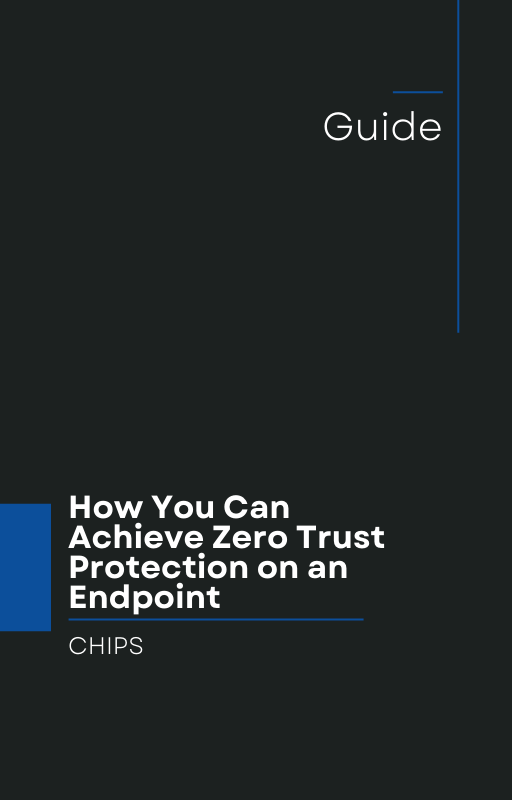The recent report from The Hacker News reveals that the notorious Lazarus Group, linked to North Korea, has expanded its malware arsenal with three new cross-platform threats: PondRAT, ThemeForestRAT, and RemotePE. (thehackernews.com) This escalation underscores the urgent need for businesses to adopt defenses that go beyond traditional detection and response and instead emphasize isolation, containment, and proactive prevention.
In this post, we’ll explore how Lazarus’s new tools operate, why “detect and respond” alone is no longer enough, and how a well-proven solution like AppGuard (now commercially available) can help your organization defend against this kind of advanced attack.
1. Lazarus Group’s latest malware campaign explained
According to the analysis by NCC Group’s Fox-IT, here is how the recent Lazarus intrusion unfolded:
-
The attack started via social engineering. The adversaries impersonated a real employee over Telegram and used fake scheduling sites (like cloned Calendly or Picktime) to lure the target into a meeting.
-
Once inside, they deployed a loader called PerfhLoader, which dropped PondRAT, a basic remote access trojan.
-
PondRAT is a lightweight RAT that can read or write files, execute shellcode, spawn processes, and perform simple system control.
-
Alongside PondRAT, they used ThemeForestRAT, which is loaded into memory (without touching disk) to hide more complex operations. ThemeForestRAT can enumerate files, inject code, execute commands, exfiltrate data, hibernate, and more.
-
Finally, once groundwork is laid, they escalate to RemotePE, a sophisticated RAT loaded via a multi-stage chain (RemotePELoader → DPAPILoader → RemotePE). This is likely reserved for high-value assets and deeper infiltration.
In essence, the Lazarus team used a blended approach: initial simple payloads to establish access, then stepping up to more stealthy, memory-resident tools to move laterally and escalate privileges. Their stealth and multi-stage design make them especially difficult to catch with detection-only tools.
2. The limits of Detect and Respond in today’s threat landscape
For many organizations, the standard approach to endpoint security is detect and respond. You deploy endpoint detection and response (EDR) or antivirus, wait until something anomalous is flagged, then respond with quarantine, investigation, or remediation. But advanced adversaries like Lazarus are increasingly bypassing or evading detection. Here’s why detect and respond is falling short:
-
Attacks execute in memory or via fileless techniques: ThemeForestRAT is designed to run in memory to avoid leaving traces on disk. Many signature- or heuristics-based tools won’t catch this reliably.
-
Zero-day vectors or unknown exploits: Lazarus may have used a zero-day in Chrome or other software to gain initial access. If your detection rules aren’t built in advance, that exploit will slip right through.
-
Dwell time becomes the attacker’s advantage: The longer an attacker stays hidden, the more damage they can do, such as credential theft, lateral moves, and persistence.
-
Post-compromise actions look “normal”: Some of what attackers do, like process launching or network connections, may look legitimate or benign, making detection systems suppress or ignore alerts.
Thus, waiting to detect and then responding is reactive. The moment of attack may already have initiated damage.
3. Why we must shift to Isolation and Containment
Given the limitations above, the security paradigm needs to shift from reactive detection to preventive containment. The goal: when an unknown or malicious action emerges, you don’t let it run free. You isolate it immediately, contain its effects, and stop it from spreading.
Isolation and containment means:
-
Limit process privileges or capabilities so even if a malicious binary is executed, it can’t touch critical parts of the OS or sensitive data.
-
Constrain interactions to a minimal allowlist: only approved operations and code paths are permitted.
-
Prevent lateral propagation and privilege escalation by cutting off or sandboxing suspicious behaviors.
-
Stop zero-day or novel malware that lacks a prior signature because containment works regardless of whether you “know” the threat in advance.
When you adopt a containment-first mindset, you don’t wait for detection. You act proactively to box off or quarantine malicious behaviors the moment they emerge.
4. Why AppGuard is a compelling solution for modern endpoint defense
If your organization is ready to move beyond detect and respond, AppGuard is one of the rare solutions built around containment rather than only detection. AppGuard has a 10-year track record protecting high-stakes environments such as government, defense, industrial, and financial sectors against sophisticated threats, including zero-days. Now, it’s available for broader commercial use.
Here are key strengths of AppGuard in the context of threats like Lazarus’s RATs:
-
Proactive containment, not just detection: AppGuard isolates applications and code paths, preventing unauthorized activity before it can execute.
-
No reliance on signatures or behavioral heuristics: Because it enforces policies and isolates actions, even unknown malware (memory-resident, fileless, zero-day) can be contained.
-
Proven in hostile environments: Over its operational history, AppGuard has thwarted real-world sophisticated attacks that evade traditional protection.
-
Low overhead and high compatibility: It works transparently with existing workflows and doesn’t demand radical changes to user behavior or application stacks.
-
Rapid deployment and enforcement: Once policy is in place, the system enforces constraints automatically.
If Lazarus had targeted endpoints running AppGuard, its multistage RAT chain would likely have been blocked or quarantined at the earliest stage. The attacker’s execution paths would have been contained rather than allowed to proliferate.
5. How to get started: moving toward containment
If you’re considering this shift, here’s a practical roadmap:
-
Map your critical assets and high-risk endpoints.
-
Define allowlists or controlled execution policies.
-
Deploy AppGuard agents in a phased manner.
-
Test simulated attacks or malware variants.
-
Roll out to production, refine policies, monitor alerts and blocked events.
-
Continuously adapt policies as new threats emerge.
6. Final thoughts
The Lazarus Group’s adoption of PondRAT, ThemeForestRAT, and RemotePE is a stark reminder that attackers are evolving quickly and they don’t wait for you to detect them. As detailed in The Hacker News article, their multi-stage, memory-resident, stealthy techniques demand a defense posture beyond “see and respond.”
Business owners and security leaders must stop relying solely on detect and respond strategies and start investing in isolation and containment as the foundation of endpoint defense.
If you’d like to learn how AppGuard can help your organization stop attacks like Lazarus’s in their tracks by isolating, containing, and preventing execution, let’s talk. At CHIPS, we specialize in guiding businesses through this transformative shift. Protect your endpoints before they’re compromised. Reach out today and let us show you how to move from detection to containment.
Like this article? Please share it with others!

October 2, 2025

Comments